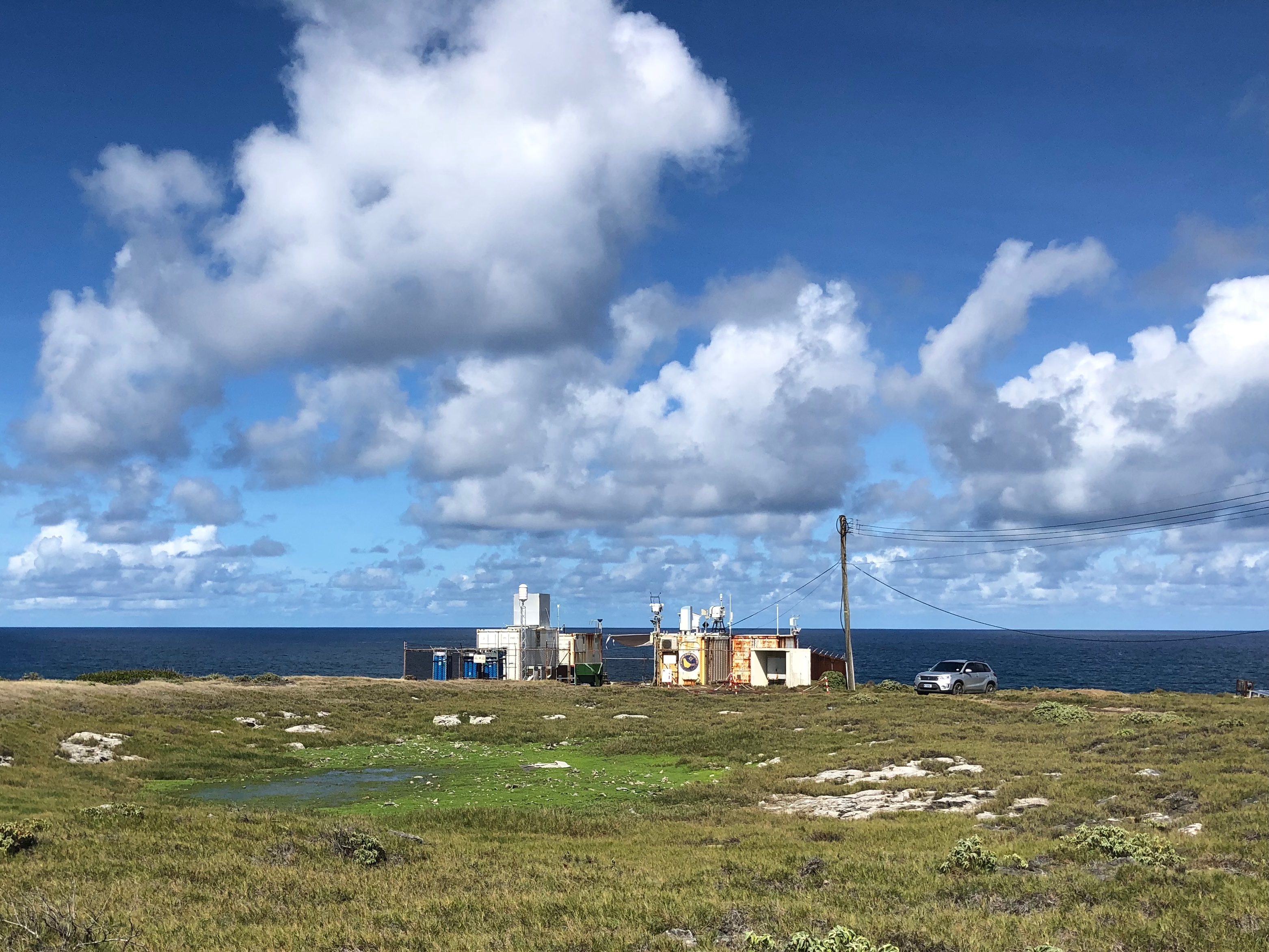Sea Salt Aerosol interaction
Remote Sensing of Sea Salt Aerosol below Trade Wind Clouds
Introduction
In this study, we explored the remote sensing of sea salt aerosol in the boundary layer below trade wind clouds using a Ka-band cloud radar at the Barbados Cloud Observatory (BCO, see picture above). Sea salt aerosols play a crucial role in Earth's radiation budget and influence cloud formation and precipitation processes. However, their characterization over the marine boundary layer has been challenging due to measurement difficulties. Our research aimed to quantify the presence of large sea salt particles and estimate their size distribution using innovative radar and lidar techniques.
Sea Salt Aerosol Observations
We utilized a Ka-band cloud radar at the BCO to detect sea salt particles with diameters larger than 500 nm, which showed upward motion below shallow cumulus clouds. Our observations over a year indicated that sea salt aerosol was present in 76% of the measurements. By analyzing two case studies, we observed that these particles grow in size as they move closer to the cloud base due to increasing relative humidity. Using combined radar and Raman lidar measurements, we estimated that the equivolumetric diameter of these hygroscopically grown particles ranges from 6 to 11 micrometers near the cloud base.
Methodology and Data Analysis
Our methodology involved a detailed analysis of radar reflectivity and Doppler velocity to characterize the sea salt particles. We also developed a retrieval algorithm to estimate the size distribution of sea salt particles in the subcloud layer. The results were consistent with measurements taken by a dry-deposition sampler and online aerosol observations, confirming the reliability of our remote sensing techniques. The study provided insights into the vertical and temporal distribution of sea salt aerosols and their interaction with clouds.
Conclusion
Our research demonstrates the capability of high-sensitivity radars to detect and quantify sea salt aerosols in the marine boundary layer. The findings contribute to a better understanding of aerosol-cloud interactions and highlight the importance of sea salt particles in cloud formation processes in the trade wind regions. Future studies can build on our methods to further explore the role of sea salt aerosols in different regions and under varying environmental conditions.
This summary is based on our publication: Klingebiel, M., Ghate, V. P., Naumann, A. K., Ditas, F., Pöhlker, M. L., Pöhlker, C., Kandler, K., Konow, H., and Stevens, B. (2019). Remote Sensing of Sea Salt Aerosol below Trade Wind Clouds. Journal of the Atmospheric Sciences, 76(5), 1189-1201. doi.org/10.1175/JAS-D-18-0139.1.
